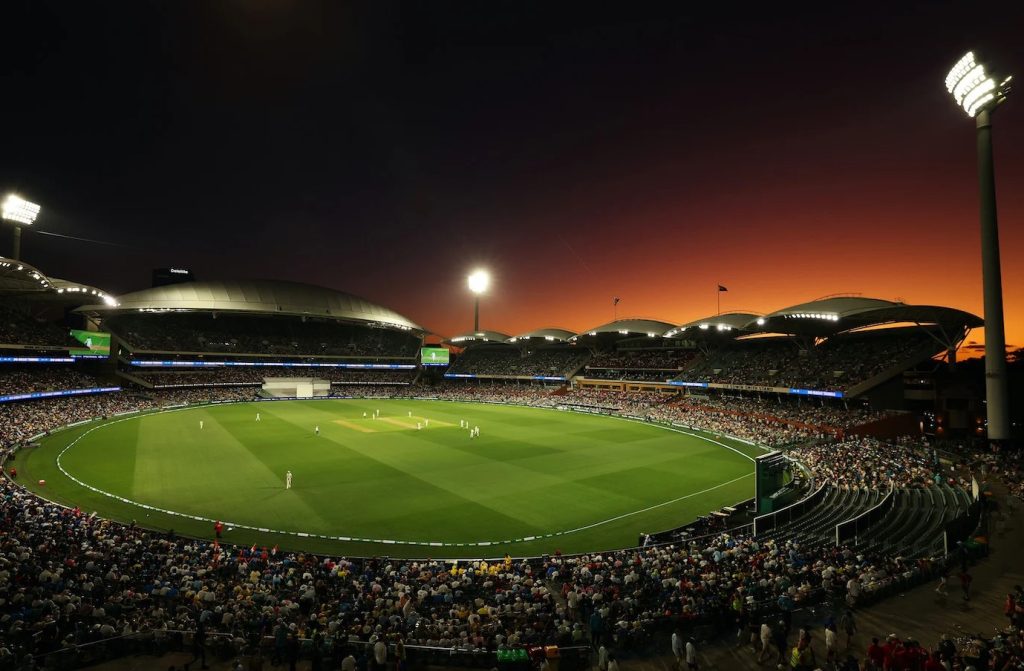E2BET: Adelaide Oval: The Adelaide Oval, one of Australia’s most iconic sporting venues, is steeped in history and tradition. Located in South Australia, it hosts cricket, Australian rules football, and a variety of other sports and events. One of the most discussed aspects among players and fans alike is the boundary length — a crucial feature that significantly influences the nature of the game. Whether it’s a batsman eyeing a six or a footballer pushing for a goal, the dimensions of the ground matter.
1. Overview of Adelaide Oval
| Feature | Specification |
|---|---|
| Location | Adelaide, South Australia |
| Capacity | Approx. 53,000 |
| Year Established | 1871 |
| Primary Uses | Cricket, AFL, concerts, rugby, etc. |
| Home Teams | Adelaide Crows, Port Adelaide Power |
The Adelaide Oval underwent major redevelopment from 2009 to 2014, modernizing facilities while maintaining its heritage appeal. However, its boundary dimensions have generally remained within traditional ranges.
2. Ground Boundary Length: Exact Measurements
Cricket Configuration
For cricket, boundary lengths can vary slightly depending on pitch placement and specific match setups, but the typical dimensions are:
| Direction | Boundary Length (Approx.) |
|---|---|
| Straight (North-South) | 79–82 meters |
| Square (East-West) | 65–70 meters |
| Long Off/Long On | 75–80 meters |
| Third Man/Fine Leg | 60–65 meters |
Note: ICC regulations require a minimum boundary length of 59.43 meters (65 yards) from the center of the pitch, but exceptions are made for historic grounds like Adelaide Oval.
AFL Configuration
The oval layout is adjusted for Australian rules football. The playing surface transforms significantly, and boundary lengths are measured as field dimensions:
| AFL Field Dimension | Length (meters) | Width (meters) |
|---|---|---|
| Goal-to-goal length | 167 | |
| Wing-to-wing width | 124 |
This makes it one of the larger AFL fields in the league, contributing to high-scoring and physically demanding games.
3. Comparison With Other Australian Grounds
| Ground | Straight Boundary (Cricket) | Square Boundary (Cricket) | AFL Length x Width (m) |
|---|---|---|---|
| Adelaide Oval | 79–82 m | 65–70 m | 167 x 124 |
| MCG | 83–86 m | 70–75 m | 160 x 141 |
| SCG | 62–68 m | 55–60 m | 155 x 136 |
| Perth Stadium | 80–84 m | 65–70 m | 165 x 130 |
| Gabba | 78–80 m | 68–72 m | 156 x 138 |
Adelaide’s slightly shorter square boundaries (particularly toward the eastern stands) make it more favorable for aggressive square play in cricket, and also contribute to a faster pace in AFL due to fewer stoppages in the wings.
4. Strategic Impact of Boundary Length
In Cricket
- Batting Strategy: Shorter square boundaries favor players who are strong cutters and pullers. Batsmen often target the short side, especially in T20 formats.
- Bowling Strategy: Bowlers need to be more precise, especially spinners and medium pacers who are more vulnerable to square boundary hitting.
- Field Placement: Captains adjust deep fielders accordingly. For instance, a longer straight boundary means more fielders patrolling the “V”.
In AFL
- Team Tactics: Larger fields like Adelaide’s require greater endurance. Midfielders must cover more ground, affecting rotations and substitutions.
- Home Advantage: Local teams are accustomed to the oval’s dimensions, allowing them to tailor their game styles effectively.
5. Historical Changes in Boundary Length
| Period | Boundary Characteristic |
|---|---|
| 1800s–1920s | Variable, no fixed boundary ropes |
| 1930s–1970s | Standardized, ropes introduced |
| 1980s–2000s | Permanent fences, minor adjustments |
| Post-2010s | Fully enclosed, digital monitoring |
6. Technological Influence and Measurement Standards
Modern technology has made it possible to accurately measure boundaries using laser tools and GPS. The ICC and AFL both require compliance with precise standards, though allowances are made for heritage grounds like Adelaide Oval.
Additionally, the introduction of smart boundary ropes (used to detect if the ball touches the rope during replays) reflects the growing intersection of sports and technology.
7. Conclusion
The Adelaide Oval’s boundary lengths are not just physical measurements—they play a defining role in how matches unfold. From influencing tactical decisions to shaping player performance, these dimensions carry both historical significance and strategic weight. As sports continue to evolve, the Adelaide Oval remains a fascinating blend of tradition and modernity, with its ground size at the heart of the action.


